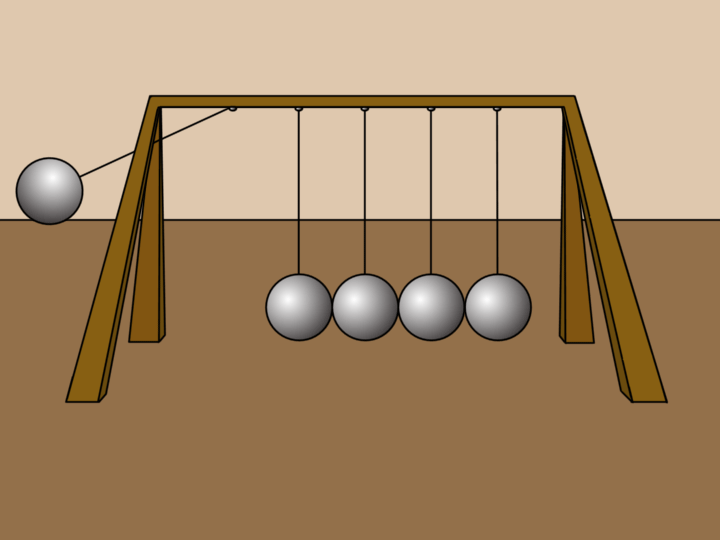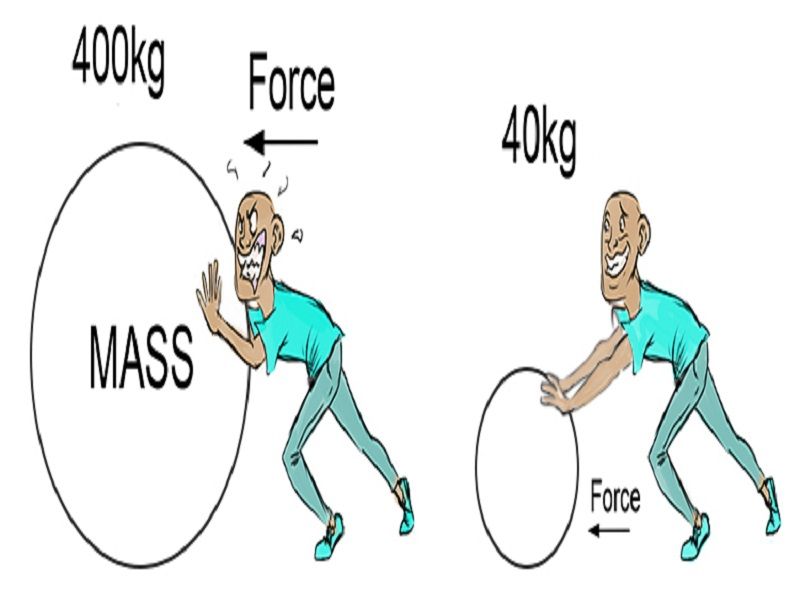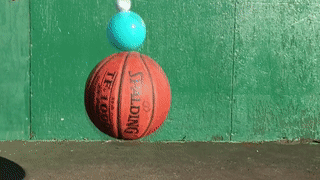Newton’s First Law 🔗
Every object persists in its state of rest or uniform motion in a straight line unless it is compelled to change that state by forces impressed on it.
TLDR: A non-zero net force will induce a change in velocity (an acceleration).

Examples 🔗
- Car Crash: A person not wearing a seatbelt during a crash will continue their motion forwards as the car suddenly stops.
- Ball: A ball rolling on a soccer field will come to a stop because of the friction force acting upon it, creating a negative acceleration (deacceleration).

Newton’s Second Law 🔗
Force is equal to the change in momentum per change in time. For a constant mass, force equals mass times acceleration. $F=m \times a$
TLDR: The acceleration created by a force depends directly upon the mass of the object.

Examples 🔗
- A student pushing a trolley can cause a great deal of acceleration
- A student pushing a car will cause very little (or no acceleration)

Newton’s Third Law 🔗
For every action, there is an equal and opposite reaction.

Examples 🔗
- Rockets: Gas is ignited causing it to heat and expand. It is expelled out a narrow nozzel at a high velocity. An equal and opposite force is exerted on the spacecraft causing it to move forwards.
- Bouncing Balls: A ball thrown on the ground exerts a force on contact. The ground exerts an equal and opposite force which causes the ball to bounce.

Pātai 🔗
With the person next to you, write a paragraph describing how Newton’s 1st and 2nd Laws relate to projectile motion.
Whakatika 🔗
- Newton’s 1st Law
- A non-zero net force will induce a change in velocity (an acceleration)
- In the x-direction there are no forces acting (friction is negligible).
- In the y-direction there is only the weight force of the object. This means the resultant force is in the downwards direction.
- An constant acceleration is therefore induced in the downwards direction at all times.
- Newton’s 2nd Law
- The acceleration created by a force depends directly upon the mass of the object.
- In Earth’s gravitational field at sea level, $g=9.81ms^{-2}$ at all times, and therefore the object is accelerated uniformly down.
Whakawai/Practise 🔗
- Try Q1-3 of Activity 10A: Using Newton’s Laws in your textbook.
- Draw a diagram each time!